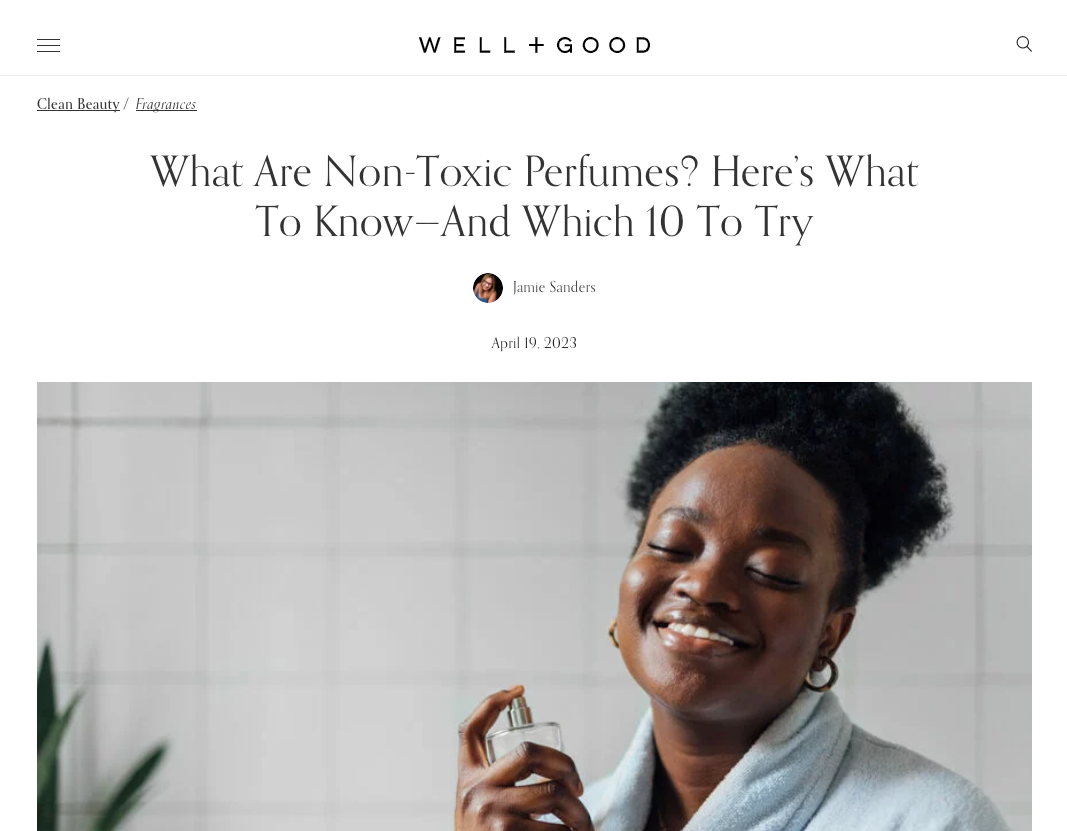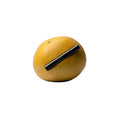What Are Non-Toxic Perfumes? Here’s What To Know—And Which 10 To Try - Well + Good

When it comes to the science of concocting, brewing, and creating perfumes and fragrances, much is still a mystery to the average consumer. We might know the top, middle, and base notes, but what’s actually going into the fragrances themselves? If you're curious about scents and formulations, chances are you've heard of "non-toxic perfumes," with brands claiming their ingredient list is "clean," and "free" from concerning additives. But, what makes a non-toxic perfume...non-toxic? Are they safer? Ahead, we dive into everything you need to know about a potentially more thoughtful and transparent approach to fragrances.
“The most difficult thing about this whole issue is that there is no legal obligation for brands to share their ingredients list,” Frances Shoemack, founder and CEO of perfume brand Abel, tells us.“Even when you know the ingredients to avoid, there is typically no way for you to know if [they’re] in your fragrance or not.”
The best non-toxic perfumes, at a glance:
- Best fresh scent: Váhy, Neon Neroli, $175
A staggering 3,224 ingredients for fragrance coverage and 395 functional ingredients used to support a fragrance compound’s durability are listed on the 2022 edition of the IFRA Transparency List, which gives an inside look into the ingredients used by fragrance companies all over the world. These ingredients can be combined in multitudes of ways and feature hundreds of different chemicals.
The exception to this rule is the overarching umbrella of non-toxic fragrances—which are not only transparent almost to a fault about their ingredient lists, but adamant about only using ingredients that aren’t harmful. How to find them, exactly? Turns out, most non-toxic fragrance brands are super forthcoming about their ingredient list—which is a major beauty green flag (more of this, please!).
“Look for brands that disclose ingredients up front and known allergens that you feel may impact your relationship with the product,” say Tanya Gonzalez and Faye Harris, co-founders of fragrance brand Eauso Vert. “The key is seeking access to full ingredient lists and finding brands that can confirm their ‘made without’ list.”
Which ingredients should you avoid when choosing a fragrance?
So, what, exactly, are these harmful ingredients, and what makes them this way? “When it comes to fragrances, it's really important to avoid phthalates, parabens, sulfates, phosphates, and microbeads,” says Gaye Straza, the CEO and founder of Kai Fragrance. “Those ingredients are often used to enhance the scent and make it last longer, but they have been linked to health concerns.”
According to a report by Breast Cancer Prevention Partners, which examined these chemicals and ingredients, some of the main health concerns can include carcinogens (cancer-causing chemicals), uterine fibroids, hormone and endocrine disruption, environmental damage, allergens, breathing issues, and migraines. “I always suggest looking out for non-toxic callouts on packaging,” says Carina Chaz, CEO and founder of Dedcool.
While there are myriad ingredients that could (and do) make the list, some of the most typical offenders are:
Phthalates
Man-made chemical compounds that are used in plastics, solvents, and personal care products. According to the National Institutes of Health, they can cause hormone and endocrine disruption, reproductive defects, and lower sperm count.
Parabens
Artificial preservatives used to prolong the shelf life of cosmetics and fragrances. They can cause skin irritation (however, newer research shows the connection between parabens and cancer and hormone disruption is pretty weak).
Sulfates
These compounds, typically used to create lather in products, can cause skin irritation.
Butylphenyl methylpropional
A synthetic fragrance ingredient with a potent floral scent, also known as lilial or lily aldehyde. It can cause skin sensitivity.
Methylene chloride (dichloromethane)
This acts as a solvent in fragrances. Not only is it carcinogenic, but it can cause headaches, damage to the central nervous system, fatigue, and skin irritation.
Formaldehyde
Used as a preservative, and is carcinogenic.
Acrylates
They act as plasticizers, and have been linked to a host of issues including cancer, neurological damage, and skin irritation.
Toluene
This colorless liquid is used to add sweetness to fragrances. According to the CDC, it can cause fatigue, eye and nose irritation, dizziness, headaches, and damage to the nerves, liver, and kidneys.
The biggest takeaway is this: We need to do our best to truly understand what is actually making up our products in general, and in our fragrances specifically. Because, really, the goal should be to use a product whose ingredient list contains more than the nebulous term “fragrance”—which, coincidentally, is exactly what non-toxic fragrance companies do. “I felt strongly about creating formulations which were free from nasties and as naturally leaning as possible,” says Amy Christiansen, founder of Sana Jardin Paris.
Depending on your scent preference, there are a host of non-toxic perfumes to choose from. Below, discover a few of our favorites.
The best non-toxic perfumes
While Neon Neroli could technically be classified as a citrus scent, we’re denoting it as Fresh for its immediate ability to transport us to a seaside retreat. Top notes of neroli, bergamot, and orange meld beautifully with middle notes of orange flower, ylang-ylang and petitgrain, while the base notes of vetiver, vanilla, and Mediterranean sun bring a subtle warmth and depth. One reviewer calls it “happiness in a bottle,” and we’re absolutely inclined to agree.
Fragrance ins and outs:
- All Váhy fragrances are cruelty-free and vegan-friendly
- This is definitely a strong scent, so use sparingly. Váhy also recommends waiting about 30 seconds after applying to let the scent fully develop
To see the full article click here.


